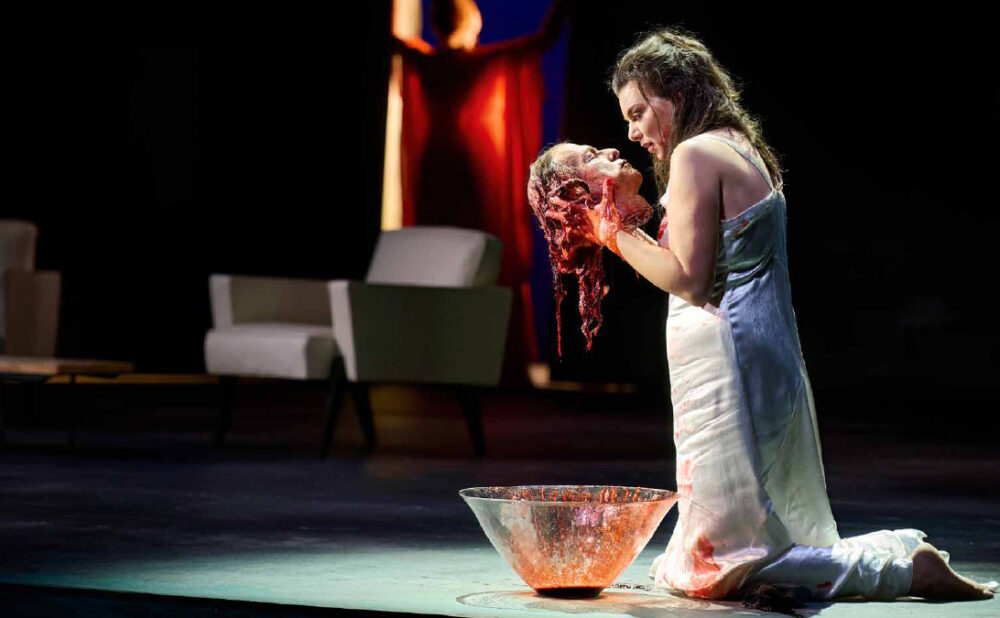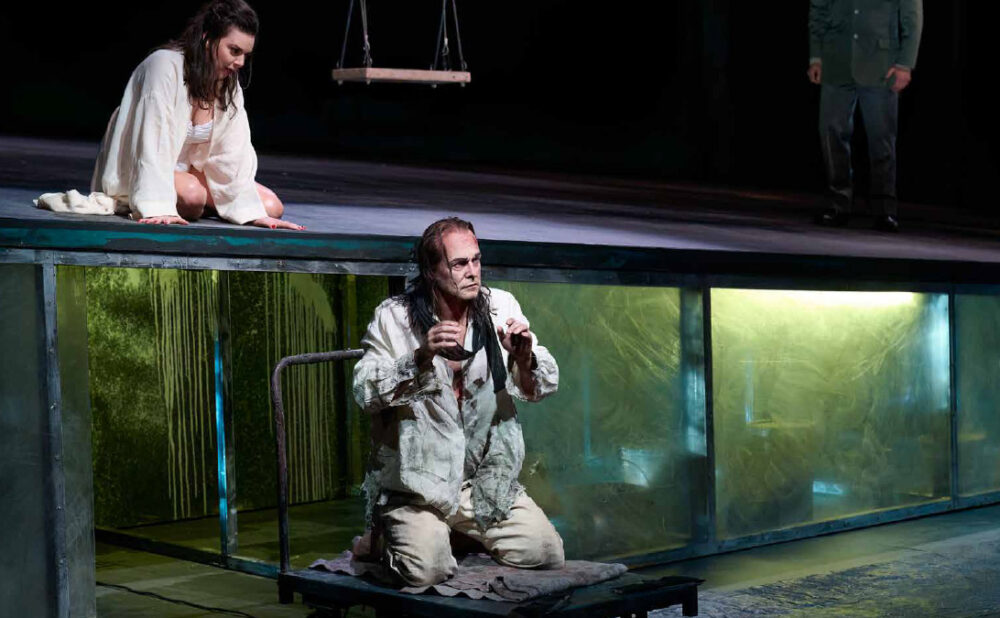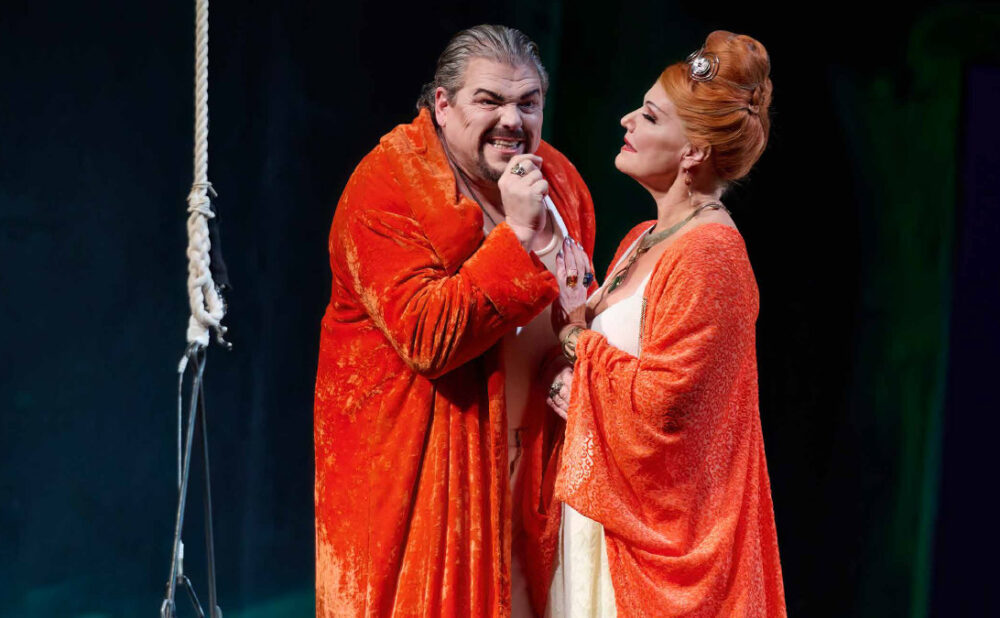COC’s ‘Salome’ delivers an all-out assault on the senses
Canadian soprano Ambur Braid stars as the titular princess in Atom Egoyan’s psychologically voyeuristic production
What: Salome
Where: Four Seasons Centre for the Performing Arts, 145 Queen St. W.
When: Fri., Feb. 3 to Fri., Feb. 24
Highlight: Atom Egoyan’s haunting interpretation of the Dance of the Seven Veils
Rating: NNN (out of 5)
Why you should go: The Canadian director’s cerebrally unconventional production of Richard Strauss’s seminal work, rife with symbolism and psychological drama, is an all-out assault of the senses.
He’s perhaps most recognized for his cerebral and non-linear style on the silver screen, but Canadian filmmaker Atom Egoyan also boasts a notable career in the opera. Some might even argue that he has helped shape the Canadian Opera Company (COC) into what it is today.
Indeed, the award-winning director has a long-standing relationship with the company, leading some of its most groundbreaking productions. Egoyan’s Die Walküre in 2004 launched the COC’s epic Ring Cycle project — marking the first time that the company has produced all four of Richard Wagner’s Der Ring des Nibelungen operas simultaneously; his eye-popping 2014 production of Cosi fan Tutte has become a key piece in the company’s repertoire; and just last year, Egoyan premiered his interpretation of Béla Bartók’s one-act opera Bluebeard’s Castle.
On Friday, Egoyan returned to the COC yet again for a throwback: a revival of his psychologically voyeuristic production of Richard Strauss’s Salome, which, when first produced in 1996, marked Egoyan’s operatic directorial debut with the company. Rife with symbolism and a densely modernist score, the seminal German opera from 1905 remains thrilling, even though this remount shows its age and felt surprisingly under-rehearsed on opening night.
The opera, based on the Biblical story and Oscar Wilde’s tragedy of the same name, follows Herod’s (Michael Schade) stepdaughter Salome, who is infatuated with the uninterested Jochanaan (preacher John the Baptist, played by Michael Kupfer-Radecky). Herod, much to his wife’s (Karita Mattila) disgust, in turn, desires Salome, who also dismisses him.
Salome does, however, agree to dance for Herod (the infamous Dance of the Seven Veils, hauntingly rendered with profound depth in Egoyan’s production with the use of backlit shadows and video projections, and passionately performed by shadow performers Clea Minaker and Faye Dupras) after he agrees to grant her any request afterwards. Her demand: Jochanaan’s head.
Canadian soprano Ambur Braid, a graduate of the COC’s Ensemble Studio program, stars as the titular princess. On par with similar dramatic soprano roles, such as Turandot and Isolde, Salome is a fiercely demanding part and is on stage for almost the entire 100-minute opera. Braid, who debuted in the role in 2020 at Oper Frankfurt, didn’t feel entirely comfortable at the outset, struggling at the bottom of her range and not fully embodying her character’s fiendishly lustful temperament.
(It should be noted that Braid spent much of her early career as a coloratura soprano — the highest voice type of all sopranos — and only recently transitioned into a dramatic soprano, with a repertoire that sits slightly lower in the voice.)
But by the blood-soaked, necrophilic finale, she turns in a fiery performance, completely inhabiting Salome’s tormented psyche and delivering Strauss’s score with aplomb.
Egoyan’s cinematic yet expansively theatrical production focuses astutely on the relationships between characters. The world he constructs is one of unfulfilled desires. Characters fixate on others only to have their sights linger unrequited: captain Narraboth (Frédéric Antoun) and Herod on Salome; the princess on Jochanaan.
Egoyan’s directorial vision adds credence to Salome’s grotesque actions; she’s trapped in a perverse society, seen by some as nothing more than an object to be defiled. Derek McLane’s double-raked set is dank and dimly lit. (Michael Whitfield is the original light designer while Davida Tkach is in charge of this revival.)
The rest of the production design leans heavily into these themes of voyeurism. Video projections of both pre-recorded and live footage (designed by Phillip Barker) feature throughout. It’s used too much, however, particularly live footage of Jochanaan locked up in his prison cell, which is meant to demonstrate Salome’s fixation on him. And though this technology likely felt revolutionary when this production premiered almost three decades ago, it now feels dated with other directors (Ivo van Hove and Robert Lepage, in particular) finding more ingenious uses today.
On the topic of technology, it’s also rather disappointing that Egoyan decides to amplify Kupfer-Radecky with a microphone during scenes in which Jochanaan is locked in prison, stripping away the colour from the baritone’s thunderous voice.
As Salome’s mother and stepfather, respectively, Mattila and Schade are compelling performers. Schade, especially, is frightfully creepy as Herod.
But both, unfortunately, are often drowned out by the orchestra, directed by Johannes Debus. That’s a common theme for almost all the performers (including Braid) when they’re singing anywhere but at the very lip of the stage — perhaps another sign that this remount could have used a few extra days in rehearsal to strike that perfect balance between performers and the orchestra.
That said, however, finding that balance is particularly challenging for this opera, in which Strauss piles so many leitmotifs and clashing harmonies to the point of near exhaustion. It’s a relentlessly dense score, and the COC Orchestra is seemingly relentless in its delivery.
Paired with Egoyan’s strikingly visual designs, it makes for an all-out assault on the senses and a production that, despite its issues, continues to shock all these years later.








